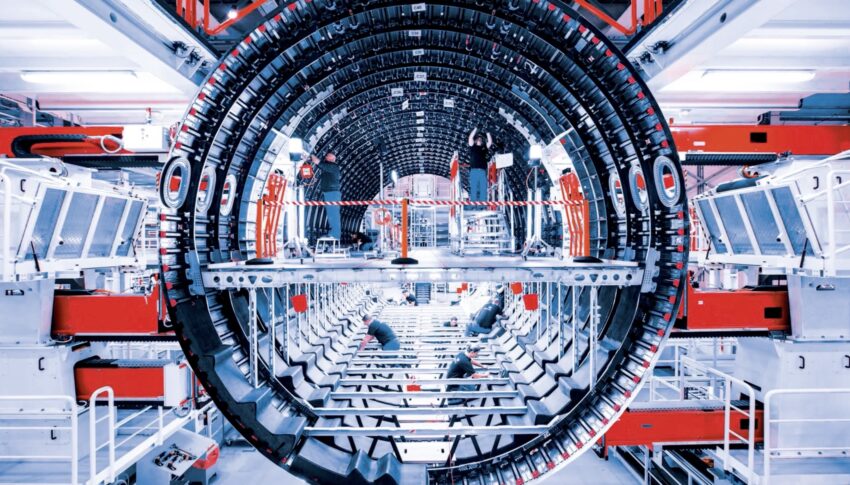Grounded aircraft, deserted airports and shuttered facilities have been a hallmark of the last year and a half during the COVID-19 pandemic. But hidden impacts have been felt all the way down the commercial aviation supply chain.
“Our supply chain has been tremendously affected by the COVID-19 crisis,” explains Mark Hiller, chief executive officer at German aircraft seatmaker Recaro. “Most of the suppliers faced massive turnover reduction in 2020. Aviation only knew one direction for decades: growth! Recaro even had to manage more than double digit growth over the last years with main focus on the supply chain on securing capacities in order to cope with the production rates. This suddenly changed one year ago when the airlines started postponing deliveries and orders in a very short term horizon. This changed radically our relationship to the suppliers.”
Recaro swung into action with very-short-term and short-term measures, protecting cash flow to deal with customer postponements and cancellations, revising priorities to mitigate the risk to its supply chain, and working closely with suppliers to understand where hidden risks might be found.
In one particular case, Hiller says, Recaro began “discussing the financial stability of a supplier in addition to requesting their pandemic plans and getting an overview about how many people have been infected with COVID-19.”
“In addition to that,” he notes, in discussions with suppliers “the overall situation on the freight market and the availability of sea containers and overall freight capacity became as well a major topic.”
Despite the drop in demand for the final Recaro seat product leading to its suppliers needing to retain a relatively large amount on hand, raw material supplies are a major risk. That’s particularly true around aluminium and plastics, with this year’s snow storms in Texas causing a force majeure situation.
More widely, and to manage these risks, Recaro has been reviewing its supplier strategy to reinforce its multiple sourcing. This work includes making the most of its international production sites, and mitigating the loss of some smaller suppliers, all of which it had previously identified as at-risk.
“Nevertheless,” Hiller says, “the crisis is not over now and — with the risk management process mentioned before — we are still monitoring the supply chain very closely.”
An expected wave of supplier consolidation below the Recaro level has yet to materialise, he says.
Consolidation is certainly continuing at the upper end of the wider commercial aviation supply chain, however, following a wave of commercial aviation mergers and acquisitions over the last decade that has resulted in increasingly nose-to-tail super-suppliers like Raytheon Technologies and Safran.
The latest to integrate, or rather reintegrate, is Airbus. The airframer is spinning back in work from subsidiaries Premium Aerotec and Stelia — work which was spun off in 2008 under the auspices of the Power8 programme during the tenure of previous Airbus (then EADS) boss Tom Enders.
Airbus says its intention is “to build a stronger aerostructures assembly value chain across its industrial system”, using one French and one German company to consolidate work within the EU.
Stelia chief executive officer Cédric Gautier tells us that Airbus’ reintegration plan “aims, for the French part, at bringing together as a new company the strengths of STELIA Aerospace, and its subsidiaries across the world and the strengths of Airbus Nantes and Airbus Saint-Nazaire.”
In essence, the plans seem to be to create a French ‘super-Stelia’ and a German ‘super-Premium Aerotec’, with both as “new aerostructures assembly companies, both wholly owned by Airbus,” according to the airframer.
They “would no longer be suppliers to Airbus but become integrated within the Airbus perimeter, simplifying both governance and interfaces in a new industrial setup,” says Airbus in a statement.
Some of the Premium Aerotec work, specifically its detail parts business, will be turned into “a new global player” that Airbus expects to be “anchored in Germany”.
With any reorganisation — especially one on this scale — comes an opportunity for rethinking the way that business is done. If, as Gautier says, Airbus is looking to the new supplier “to successfully take up the future challenges of the aeronautical industry”, it will need to seize the prospects of digitalisation and modernisation of its activities.
Back at Recaro, chief executive Mark Hiller expects that smarter supply chains, including technological improvements, will be of benefit to the industry. “Open communication is the key,” he emphasises. “In addition to that digitalisation within the supply chain will be a major advantage for the future.”
Author: John Walton
Published: 8th June 2021
Join the Challenge
We are talking about this over in our challenges area: What big changes have you experienced across the aviation supply chain – good and bad – as a result of COVID-19? We’d love to hear your thoughts.





